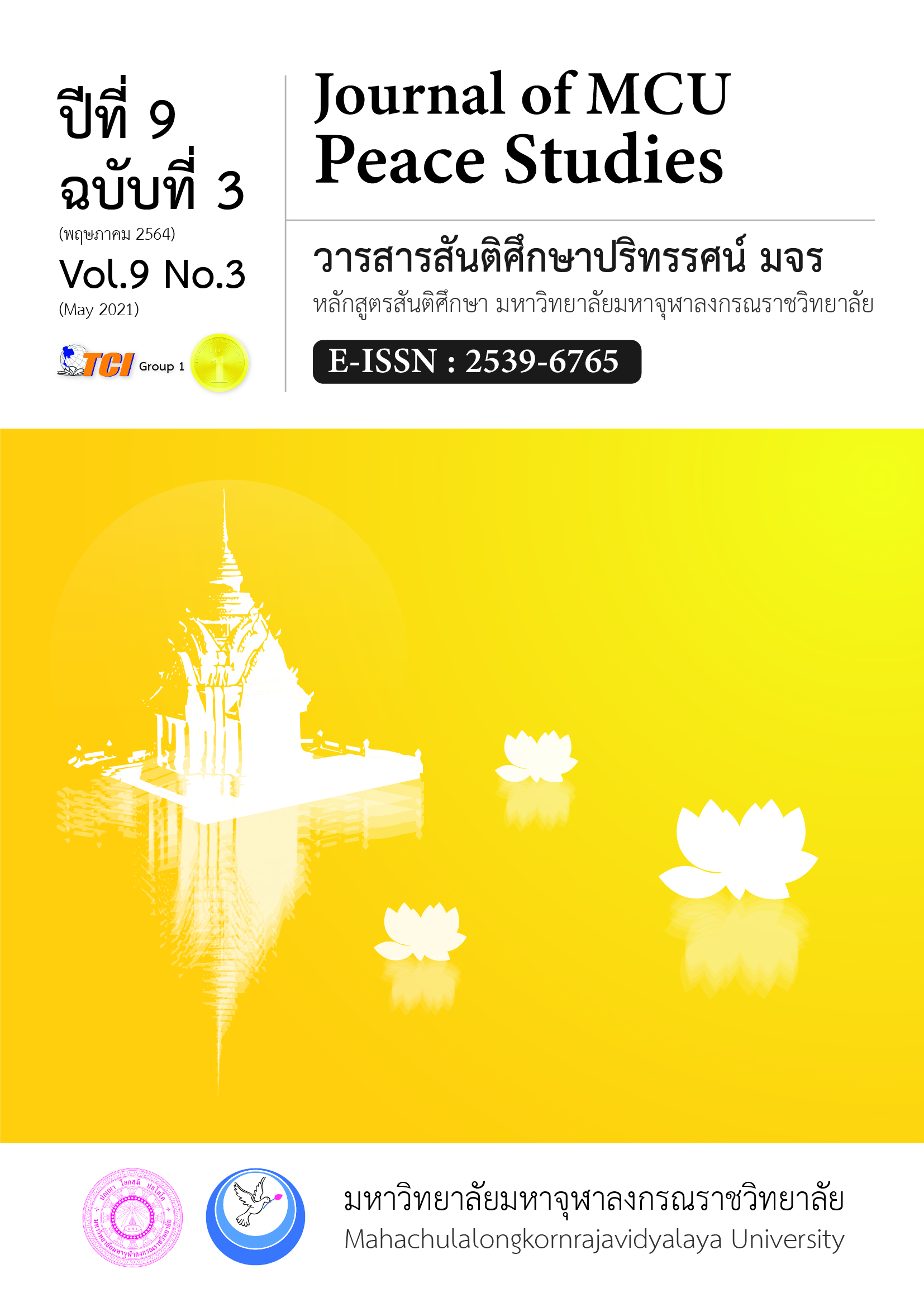A Pattern of Reiki – Mindfulness Integration for Stress Therapy: A Case Study of Hotel Fuse’ s Managers, Muang District, Rayong Province
Main Article Content
Abstract
The dissertation entitled “A Pattern of Reiki-Mindfulness Integration for Stress Therapy: A Case Study of Hotel Fuse’s Managers, Muang District, Rayong Province” consisted of the following objectives: 1) to study the basic context on well-being and problems of Hotel Fuse’s managers in Muang district of Rayong province, as well as to study a model of therapy for stress based on Reiki approach; 2) to conduct an analytical study on a model of therapy for stress based on the concept of mindfulness in Theravada Buddhism; and 3) to develop and present a model of therapy for stress based on the integration of Reiki and mindfulness for Hotel Fuse’s managers in Muang district of Rayong province. The study employed a research and document (R&D) approach by means of mixed-method research through studying documents and research works, in-depth interviews, training process, field experiments, as well as the experimental. The research instruments consisted of an in-depth interview form, a stress assessment (SPST-20), a blood pressure monitor, electroencephalography (EEG), a journal notebook, and an interview after the training. From the study, it was found that 1. The stress of Hotel Fuse’s managers arises from various feelings inside their mind, namely, expectation, anxiety, need, and adaptation to the external conditions that conflict with the internal needs. 2. Regarding the training process, the research applied Satipaṭṭhāna (the four foundations of mindfulness) and Ariyasacca (the four noble truths) to determine the process. 3. The new body of knowledge that has gained from the study is a model of an integrated stress therapy resulting in 4 aspects, namely, peacefulness, wisdom, compassion, and happiness, which the researcher has developed as a course called “The Happiness Within”. A 2-day training course that allows the practitioner to learn how to deal with their thoughts and treat stress on their own.
Article Details
Views and opinions expressed in the articles published by The Journal of MCU Peace Studies, are of responsibility by such authors but not the editors and do not necessarily reflect those of the editors.
References
Bronwen, & Stiene, F. (2008). The Reiki Source Book. Sydney: Books.
Keawpimon, P. et. al. (2012). The Effect of Reiki Energy Healing and Mindfulness Meditation Program on the Human Aura and Holistic Health of Thai Nurse Students. Journal of Behavioral Science, 18(2), 41-60.
Kruekaew, J. (2014). Effect of Reiki Therapeutic Nursing Program on Comfort among Postpartum Mothers with Cesarean Delivery. (Master’s Thesis). Prince of Songkla University. Songkla.
Nagel, D. (n.d.). Reiki Goes Mainstream. Retrieved March 15, 2020, from https://www.michiganhealthyliving.com/reiki-goes-mainstream.
Phucharoen, W. (2019). Mindfulness in Action. Bangkok: Amarin Printing.
Buddhadasa Bhikkhu. (1992). Human Handbook. Bangkok: Thammasapa.
Radzienda, T. (2017). Personal Transformation through Reiki. (2nd ed.). Bangkok: Sovereign Word Publishing.
Rand, W. L. (2020). Reiki in Hospitals. Retrieved June 6, 2020, from: https://www.reiki.org/articles/reiki-hospitals.
Sacks, B. (2014). Reiki goes mainstream: Spiritual touch practice now commonplace in hospitals. Retrieved May 6, 2020, from: https://www.washingtonpost.com/national/religion/reiki-goes-mainstream-spiritual-touch-practice-now-commonplace-inhospitals/2014/05/16/9e92223a-dd37-11e3-a837-8835df6c12c4_story.html.

